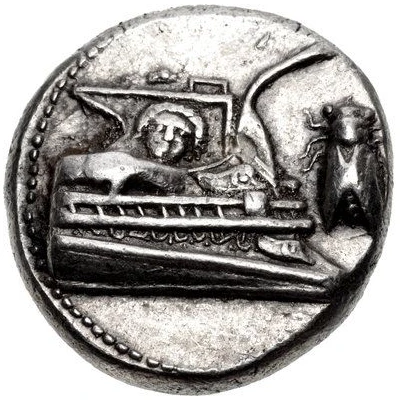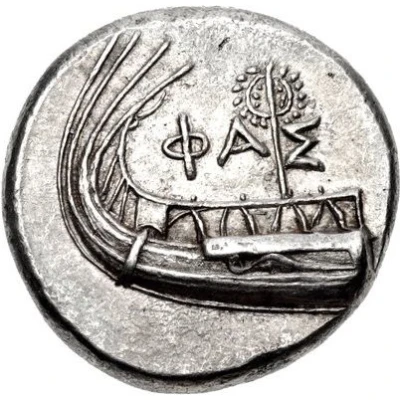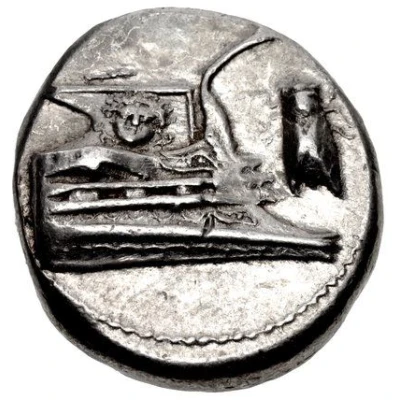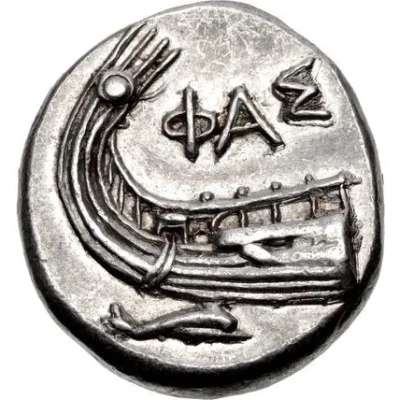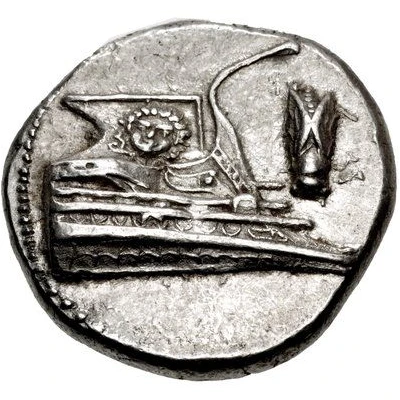
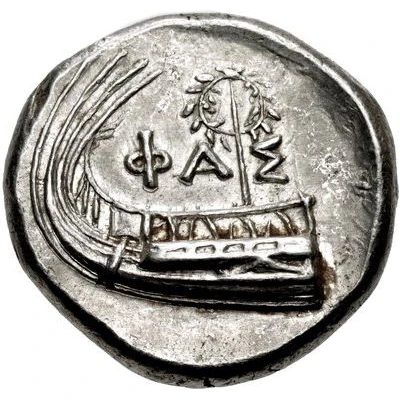

© Classical Numismatic Group, Inc.
Stater 400 BC - 300 BC
| Silver | 10.35 g | 21.5 mm |
| Issuer | Phaselis (Lycia) |
|---|---|
| Type | Standard circulation coin |
| Years | 400 BC - 300 BC |
| Value | Silver Stater (3) |
| Currency | Drachm |
| Composition | Silver |
| Weight | 10.35 g |
| Diameter | 21.5 mm |
| Shape | Round (irregular) |
| Technique | Hammered |
| Orientation | Variable alignment ↺ |
| Demonetized | Yes |
| Updated | 2024-10-10 |
| Numista | N#400846 |
|---|---|
| Rarity index | 100% |
Reverse
Stern of galley left, with wreath hanging from pole mounted on the deck; ΦAΣ above.
Script: Greek
Lettering: ΦAΣ
Comment
Heipp-Tamer Series 6, unlisted variety.
Interesting fact
The Phaselis Stater coin was used as a form of currency in the ancient city of Phaselis, which was located in the region of Lycia (present-day Turkey). The coin features an image of a lion's head on one side and an inscription on the other side that reads "ΦΑΣΕΛΙΤΩΝ" (Phaseliton), indicating its origin and the fact that it was issued by the city-state of Phaselis. This coin is significant not only because of its age and historical value, but also because it showcases the advanced minting techniques and artistry of the ancient civilization that produced it. The coin's design and craftsmanship reflect the cultural and artistic influences of the time, making it a valuable piece of history that has been preserved for centuries.
